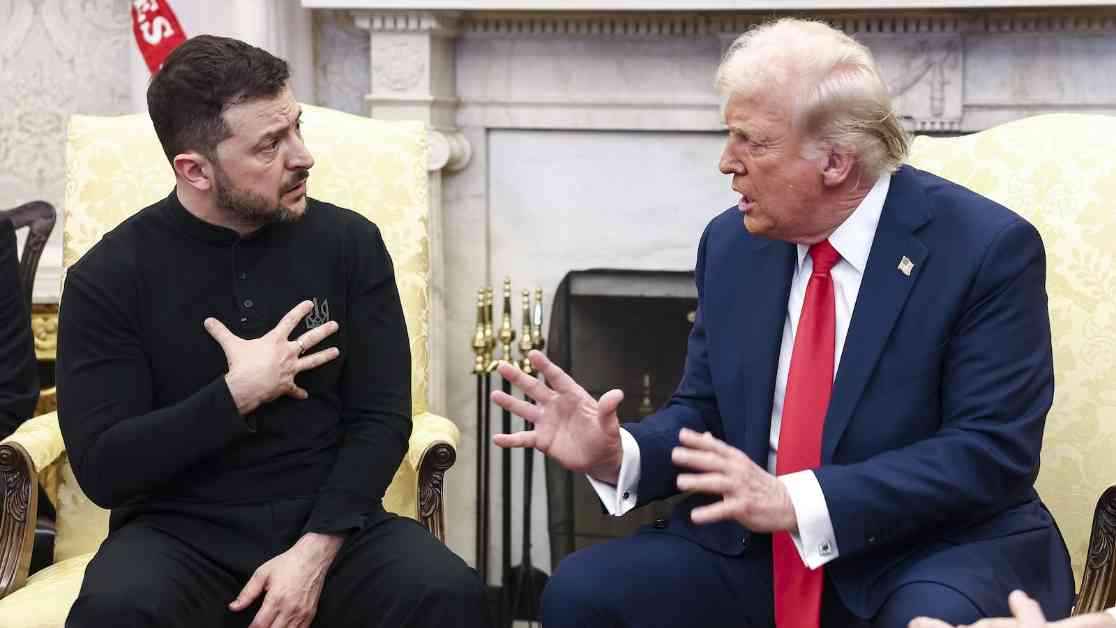President Trump and Ukrainian President Zelenskyy’s recent Oval Office meeting made for a dramatic scene, with tensions flaring as the two leaders engaged in a heated exchange, their voices echoing off the walls of the historic room. The high-stakes encounter took a surprising turn as Trump and Vice President JD Vance reprimanded Zelenskyy for his handling of the ongoing conflict with Russia, escalating the situation into a public spectacle.
Zelenskyy’s visit to Washington was intended for the signing of an agreement granting the U.S. access to Ukraine’s valuable mineral resources. However, the anticipated news conference where the deal was set to be sealed was abruptly canceled amid the escalating confrontation. Trump, in a terse statement, expressed his dissatisfaction with Zelenskyy’s behavior, accusing him of disrespect towards the United States and his administration, prompting the Ukrainian leader to leave in haste.
The meeting quickly devolved into a war of words, with Trump issuing a stark warning to Zelenskyy: “Make a deal or we’re out.” The American president’s ultimatum left little room for negotiation, painting a dire picture of potential consequences should an agreement fail to materialize. The specter of World War III loomed large as the two leaders clashed over the path forward in resolving the conflict.
Vice President JD Vance also waded into the fray, challenging Zelenskyy’s approach and highlighting what he perceived as deficiencies in Ukraine’s response to the crisis. Vance’s impassioned defense of Trump’s diplomatic efforts underscored the deep divisions that existed between the two sides, with accusations of disrespect and ingratitude flying back and forth in the Oval Office.
Zelenskyy, not one to back down, took the opportunity to denounce Russian President Vladimir Putin as a “terrorist,” appealing to Trump for support in curbing Putin’s aggression. The Ukrainian leader’s plea for solidarity against a common enemy revealed the complex geopolitical dynamics at play, where alliances and allegiances were constantly shifting in the face of an increasingly volatile global landscape.
Despite the intense rhetoric and personal animosities on display, Trump sought to distance himself from any perceived alignment with Putin, emphasizing his commitment to the United States and the broader international community. However, his pointed remarks about Zelenskyy’s supposed animosity towards Putin hinted at the deep-seated mistrust and enmity that defined the relationship between the two leaders.
As the dust settled on the contentious meeting, the implications of the public fallout reverberated far and wide, casting a shadow over the prospects for peace and stability in the region. The clash of egos and ideologies served as a stark reminder of the challenges facing global leaders in navigating the complexities of modern diplomacy, where personal grievances and political calculations often intersect in unexpected ways.
In the aftermath of the Oval Office showdown, one thing remained clear: the road to peace was fraught with obstacles and uncertainties, with no easy solutions in sight. The world watched with bated breath as the fate of Ukraine hung in the balance, caught between the competing interests and agendas of powerful nations vying for control and influence in a rapidly changing world.


